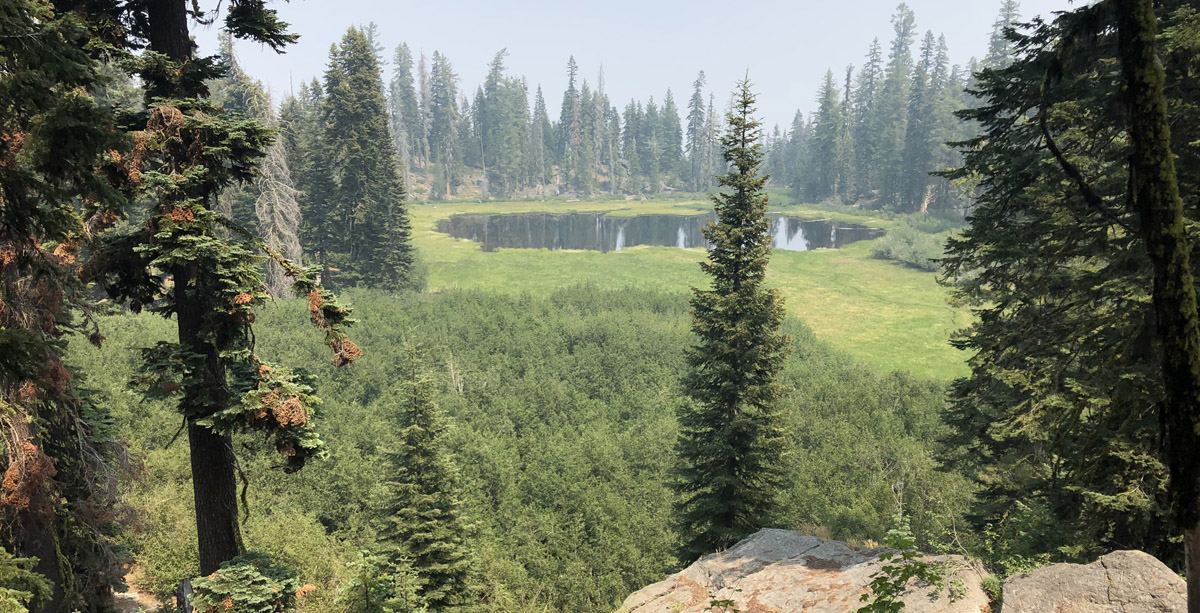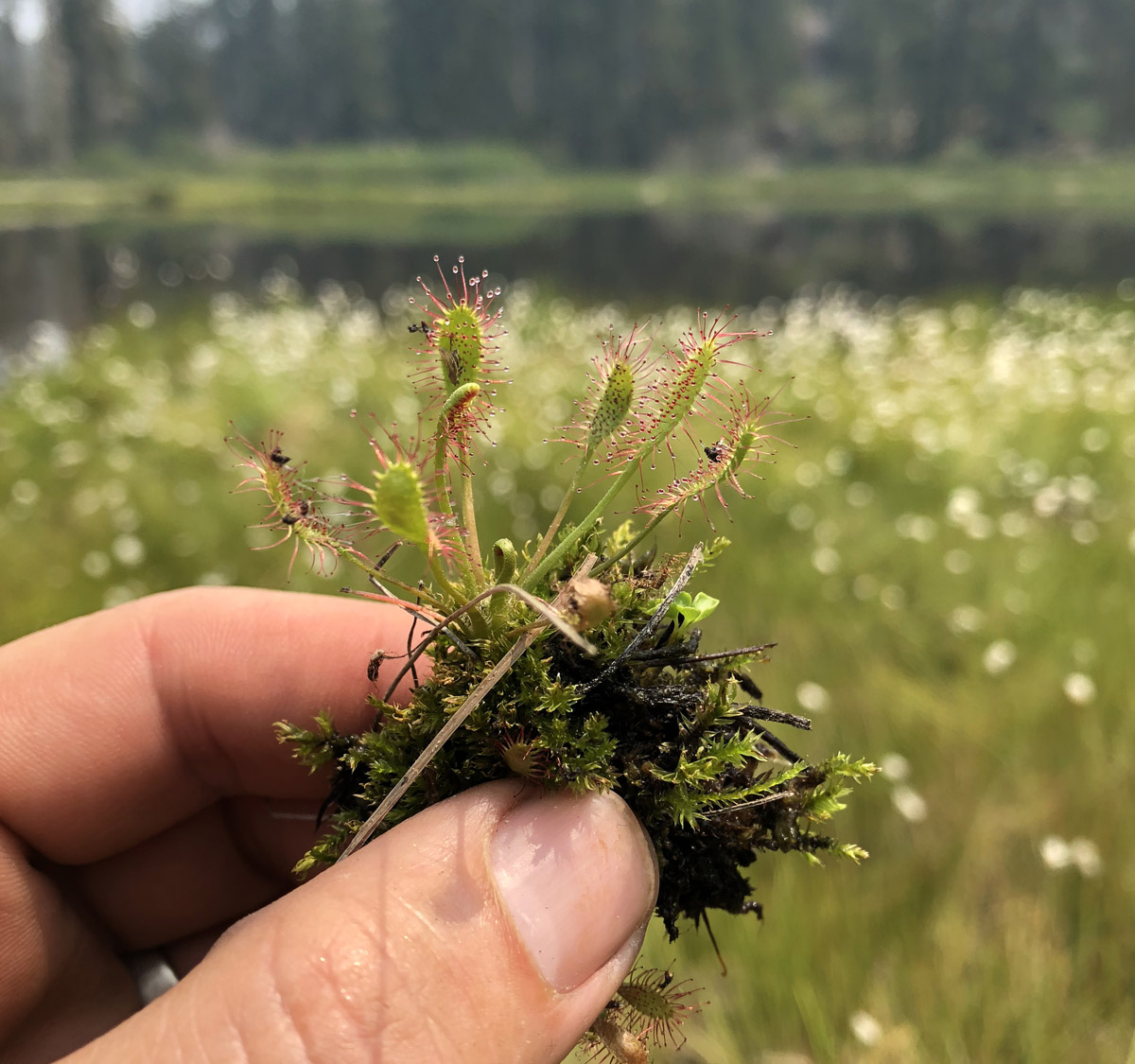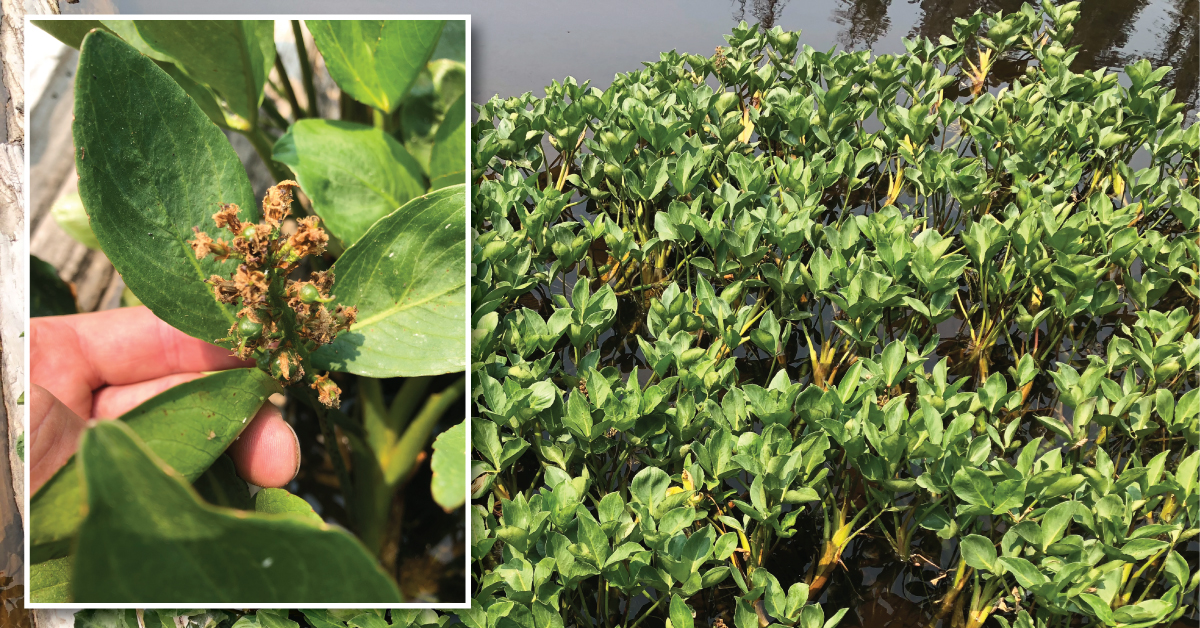Isinglass Lake
On a recent trip into the Marble Mountain Wilderness to map and monitor whitebark pine (Pinus albicaulis) on the Klamath National Forest, I found myself near Isinglass Lake. I had read that the only population of great sundew (Drosera anglica) in the Klamath Mountains was documented here in 1972. I knew there was a Klamath Mountain peat bog to be found.
Peat bogs develop when surface water is acidic and therefore low in nutrients. Plant growth is slow due to the low levels of nutrients, but decomposition is even slower. Plant material accumulates as a floating layer of soil above the surface water. This creates a raft of soil–amazing stuff! Check out the video below.
The water in the lake, which we drank, was brownish in color and tasted of tannins. Certain species can deal with low nutrients and slowly decomposing soil including the two species highlighted below.



Looks smoke free and peaceful
Jim- there was some smoke, but it was not bad. I think we got lucky!
Great post Michael! Our cabin is right across the river from where Isinglass flows into the Scott River. What access did you use to hike up there?
Matthew
Thanks Matthew- We accessed the lake by a cross-country route from the Big Meadows trailhead. 4WD is needed to get to the very end, or some road could be walked.
Gorgeous photo of sundew, and your bouncing vid is a vivid way to really sense the sponginess of the setting.
I’ve always been curious about Isinglass Lake, but I’ve never figured out how to get to the Big Meadows Trailhead by road. I thought the access was via a road that leaves the Shackleford Creek Road in the NE corner of Section 17, but the gate has always been locked whenever I go by there. Is there another way?
Jeff- the road is a few miles further than the Shackleford access. 4wd for last few miles…
Ah, I think I know the road you mean. I’ll try that. Thanks!
I passed you and Ian a few weeks ago as we were heading back down toward Kidder Lake from planting fish in Fisher Lake. What were you checking out or documenting in that area? I would have liked to have stopped and talked right then but we had the other string of pack horses waiting for us to get by in that narrow spot right at that same moment so had to keep moving. I’ve been very interested in all that you do for quite some time.
Hi Rhonda- After you went by I asked Ian if your name was Rhonda! Sorry we did not connect out there. I have been working on mapping whitebark pine mapping and inventory for the Klamath National Forest.
Isinglass Lake is one of those places I’ve been seeing on a map for years, and was intrigued, but never knew anything about. It’s an odd name. Isinglass is a form of collagen obtained from the dried swim bladders of fish, used for the clarification or fining of some beer and wine, and for a few other purposes. Why that has anything to do with a lake high in the forests of the Klamath Mountains is hard to say. Now it turns out to be another of these mountains’ unusual and uncommon habitats. Isinglass Lake is just barely inside the national forest boundary. There is private land in the watershed. Measures to give it better protection might be in order.
Isinglass is also a synonym for muscovite, which is a variety of mica. That seems more likely.